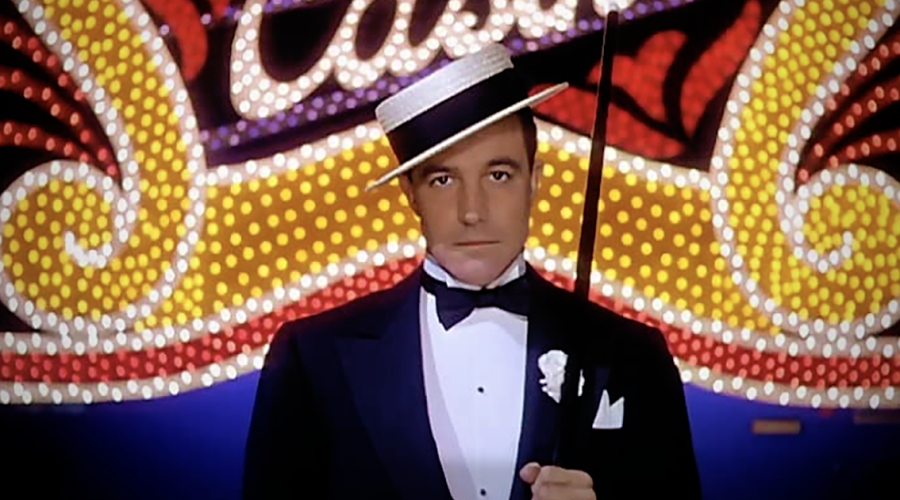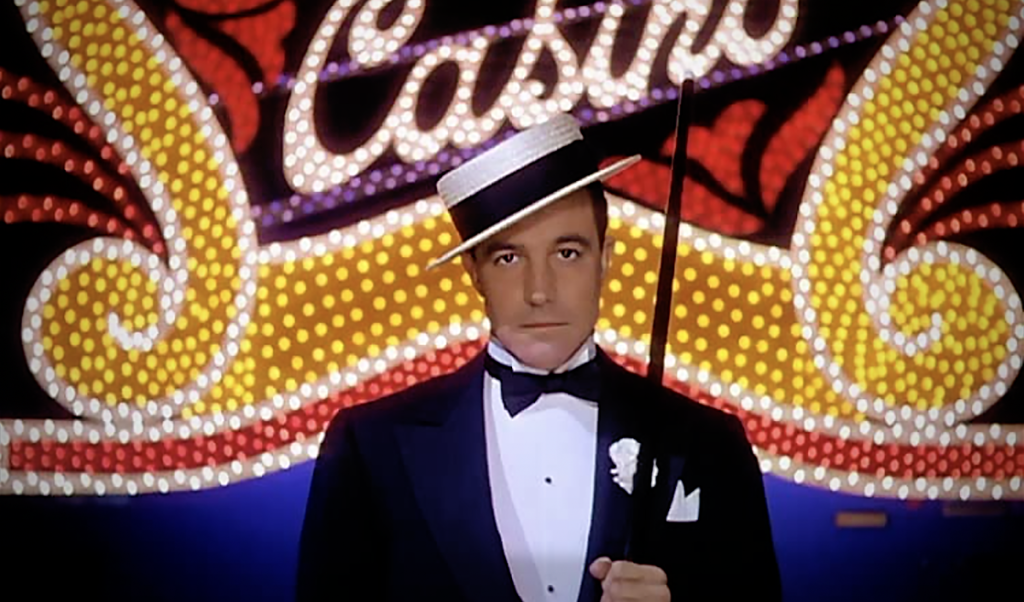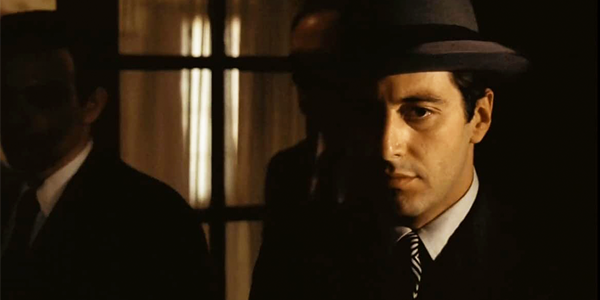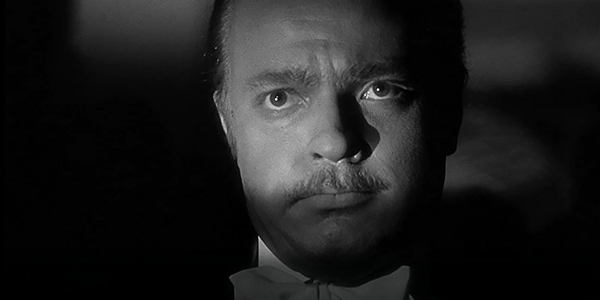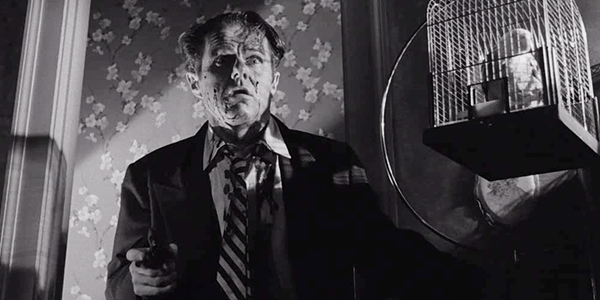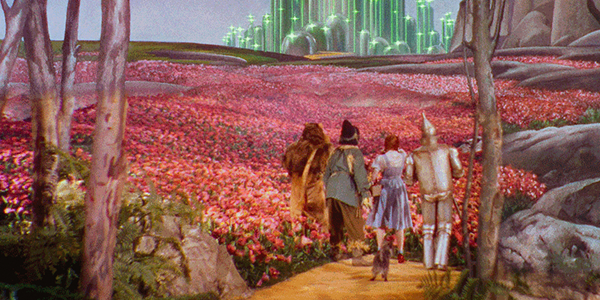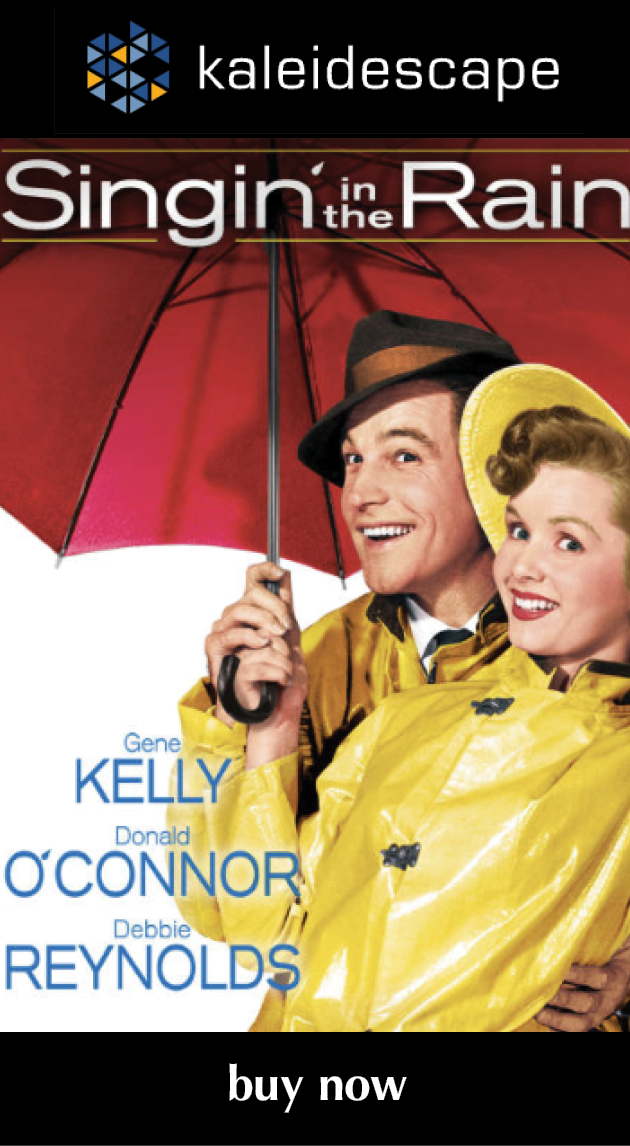Review: Singin’ in the Rain
also on Cineluxe
Sign up for our monthly newsletter
to stay up to date on Cineluxe
This most classic of classic musicals bucks the recent trend and actually proves to be well served by its 4K incarnation
by Michael Gaughn
May 3, 2022
I’m a sucker for films about process. It’s one of the reasons why most fantasy films do nothing for me—when you’re in a universe where anything can happen and where credible cause and effect no longer pertains, yes, everything is possible but nothing is interesting. Showing process makes characters meaningful within a fictional world—it gives them a reason to be. The more convincing the process is, the more convincing the world portrayed becomes, and the more compelling the characters.
And process isn’t genre specific. It can range from heist films like The Asphalt Jungle to a financial-meltdown flick like The Big Short to engineering the end of the world in Dr. Strangelove. And then there’s the whole subgenre of show-biz process. A sitcom like The Dick Van Dyke Show still holds up because its backstage world is self-consistent; the characters’ wisecracks ring true because they’re comedy writers.
Most musicals bore me because they tend to veer too much toward fantasy, leaving credibility behind. But there’s a sub-subgenre of show-biz-process musicals that tend to be more substantial than the rest, that give you something to chew on besides production numbers. And I don’t think it’s pure coincidence that the two best musicals ever—The Band Wagon and Singin’ in the Rain—both spring from the process mold.
I have to give the edge to The Band Wagon because basing it in Broadway culture, as opposed to Singin’ in the Rain’s more superficial world of Hollywood, lends it a more satisfying depth. Also, the dilemma of Fred Astaire’s character—cast back into a theatrical milieu that’s completely changed around him, trying to not just hold his own but transcend it—is more compelling than Gene Kelly’s need for a little bit of emotional propping up.
All of that said, Singin’ in the Rain still plays as well now as it did when it was released in 1952. And, yes, much of that has to do with the production numbers, which were the primary draw then and remain so now. But its longevity, and its energy, and its continued relevance owe just as much to its faithful, if arch, portrayal of Hollywood during its disorienting 1920s transition to sound. And for that we can thank the brilliant, slyly witty writing team responsible for so much other meaningful fluff, Betty Comden and Adolph Green (who also penned The Band Wagon, by the way).
One more thing before I get to the transfer: Process films lend themselves particularly well to satire (again, Strangelove), and Comden and Green, with their spot-on portrayals of show-biz worlds, were always able to lace their confections with a little dollop of well-placed acid—which also has a lot to do with their efforts’ relevance and longevity.
As for this presentation: Singin’ in the Rain is a legitimate classic (it’s kind of surprising how many illegitimate classics there are out there—products more of the zeitgeist and misplaced affection than of talent and craft), and truly classic films haven’t been faring too well lately in 4K HDR (witness Citizen Kane and The Godfather). So I was a little trepidatious about approaching this release, especially since the original negative isn’t around anymore to work from, which can be a warning of a bumpy ride ahead.
But, while it might not reach reference-level quality, Singin’ in the Rain is a pleasure to watch in 4K HDR. The experience is, for the most part, visually consistent, and the inconsistencies that do exist aren’t likely—with one particularly egregious exception—to pull you out of the film. The colors are sumptuous and vivid without lapsing into garish (which has been a problem with earlier home video releases of this film). In fact, the HDR grading lends them just enough subtlety to make the more visually heightened moments (like the deliberately gaudy montage of first stabs at musicals that leads up to “Beautiful Girl”) look appropriately exaggerated but never cartoony.
The truly problematic spots seemed to be confined mainly to moments on either side of optical dissolves. For instance, the color palette collapses completely at the end of “Moses Supposes,” making Gene Kelly and Donald O’Connor look like they’re suffering from some kind of vitamin deficiency. The particularly egregious moment mentioned above falls in the middle of the big “Broadway Melody” number as Kelly fantasizes about Cyd Charisse after she walks into a casino. There’s a long (almost one-minute) take after the dissolve as Kelly begins to dance with her, and the resolution is so jarringly low that it induced a DVD flashback. This is likely a product of the elements they had to work with, but the shot goes on for so long that you just can’t brush it off.
One last thing to gnaw on about the image transfer: I know this has become a critical saw, but HDR makes some of the shots stunning—for instance, all of the lighted signage in “Broadway Melody” and the medium shots of Jean Hagen and Debbie Reynolds as they stand on either side of the curtain at the film’s finale. This comes mainly from having plenty of highlights to accentuate within the shots. Here’s my query: Doesn’t the ability to do this throw off the visual balance of the film? What about all the other footage (the bulk of the movie) that doesn’t lend itself to creating a 3D-ish effect? I loved seeing the shots mentioned above looking so vivid, but it seems to me more to the point to stay true to the look the filmmakers intended. Something tells me we’ll look back at this first round of releases of old films in 4K HDR and find a lot of it gimmicky.
As for the audio: It’s surprisingly dynamic and palatable. But, as much as I know it pains some people to hear this, I have to say it again: This film was originally mixed in mono so it should be listened to in mono, no matter how deep your addiction to all those other speakers in your room. We can’t claim to care about the filmmakers’ intent, and support a booming market of director’s cuts, etc., and then just pick and choose which aspects of that we’re actually going to honor, based on our proclivities. (Sadly, as with The Godfather, the original mono isn’t an option with the 4K HDR version. You have to descend all the way to the lowly DVD-quality download to have that experience.)
But to boil all of this down to its essence: Singin’ in the Rain is well worth seeking out in 4K HDR because it still holds its own as both a musical and a classic film and provides a visual and aural treat despite a few unavoidable hiccups along the way.
Michael Gaughn—The Absolute Sound, The Perfect Vision, Wideband, Stereo Review, Sound & Vision, The Rayva Roundtable, marketing, product design, some theater designs, a couple TV shows, some commercials, and now this.
PICTURE | It might not reach reference-level quality, but Singin’ in the Rain is a pleasure to watch in 4K HDR. The inconsistencies that do exist are, with one exception, unlikely to pull you out of the film.
SOUND | The audio is surprisingly dynamic and palatable but, unfortunately—and inexcusably—there’s no option here for listening to the original mono mix
© 2023 Cineluxe LLC
